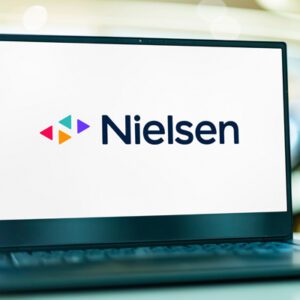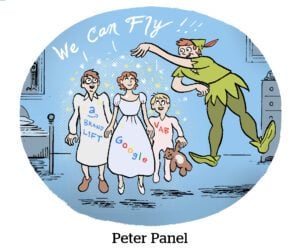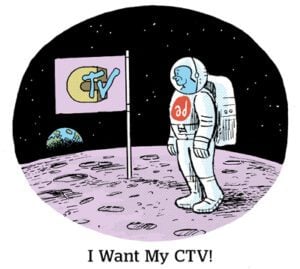Hey there, AdExchanger readers!
I’ve spent the past two years digging directly into the weeds of all things streaming and video ad tech. It’s messy in there, let me tell you.
And next week, I get to lift the hood on the hottest topics in CTV – live onstage at our inaugural CTV Connect event in New York City on March 13 and March 14.
For example, what do buyers want – and need – from their CTV partners? Quite a lot, actually. (Did somebody say measurement?) I’ll sit down with agency execs from Tinuiti, Horizon Media and Publicis-owned Digitas to hash it out.
But it’s not all headaches and challenges. There are also lots of growth opportunities for marketers, agencies and programmers ahead of this year’s upfront season.
Speaking of which, Amazon is set to make its upfront debut this May. Prime Video and live sports will no doubt be at the top of its agenda. In the meantime, I’ll be hosting a fireside chat on Thursday afternoon with Amazon’s Danielle Carney, head of NFL sales, to talk about the company’s plans for livestreaming sports – which go far beyond Thursday Night Football.
But enough about me. Here are some of the other sessions I’m especially excited about.
Navigating TV Carriage Rights In A Programmatic World (with MiQ)
Programmatic heralds a new era of CTV ad buying with flexibility and optionality – although not without pitfalls.
Creating multiple pathways to streaming supply that several rightsholders share has created a severe bid duplication problem.
In many cases, for example, a streaming app, broadcaster and smart TV maker each has rights to sell ad inventory within the same piece of content, which leads to high frequency and messes with competitive separation. And that’s assuming that all of the resellers in an auction are legitimate.
A higher standard for transparency – especially in terms of supply sources – is becoming nonnegotiable for advertisers that want to spend more on programmatic TV. 💸
Beyond 30 Seconds: The Move To Redefine Advertising Engagement (with GroupM and Google)
TV advertisers also want more ways to engage viewers and measure the impact of that engagement. But viewers don’t want ads. So what’s a brand to do?
New and interactive ad formats could help address this CTV conundrum, which explains why unconventional units have been making headlines.
Sponsorships and product placements feel less like ads because they’re not interruptive for viewers, and they also help boost brand lift when paired with more traditional commercials. QR codes, meanwhile, can be used to encourage viewers to “bookmark” information about a product for future reference when they’re more in the mood to shop (as in, not in the middle of watching a show).
Problem is, there’s a lack of industry performance benchmarks and measurement standards for new ad units. Heck, even classic 15- and 30-second spots still don’t have standardized measurement. 🤷🏻♀️
Still, there’s directional evidence that viewers dig (or at least don’t dislike) new ad types.
For example, less interruptive ads are better for binge-watchers, Google’s global head of connected TV and streaming, Matt McDonald, told me last month. (He’ll be on stage, by the way!) According to research conducted by YouTube, bingers are more receptive to ad formats that don’t interrupt their viewing experience. (Can confirm.)
Fast-Forward At Your Peril: Understanding Data Privacy In CTV (with Loeb & Loeb LLP)
But engaging the right consumers requires having enough data to reach them and determine whether they took an action – and some of that data is getting harder to come by.
CTV doesn’t use cookies for targeting and measurement, so streaming advertisers don’t have to worry too much about the aftermath of signal loss … right?
Wrong.
Relying on IP addresses or automatic content recognition (ACR) data to target and measure streaming campaigns can be problematic if collected and used improperly, as in, without consent.
IP addresses are considered personally identifiable information under some US state privacy laws, and regulators will likely start paying more attention to how this data is used for advertising purposes.
And ACR, when tied to an identifier, could fall under the Video Privacy Protection Act, a federal Blockbuster-era law that was meant to protect a consumer’s video rental records and is now being used as the basis for class-action lawsuits against streaming platforms.
Smart TV manufacturers and streamers do their best to comply by implementing mechanisms to collect consent – but whether or not it counts as informed consent is another story.
I could go on, but why not just register for the event if you haven’t already?
And then come say hey next week! 👋
Are you enjoying this newsletter? Let me know what you think. Hit me up at [email protected].
















